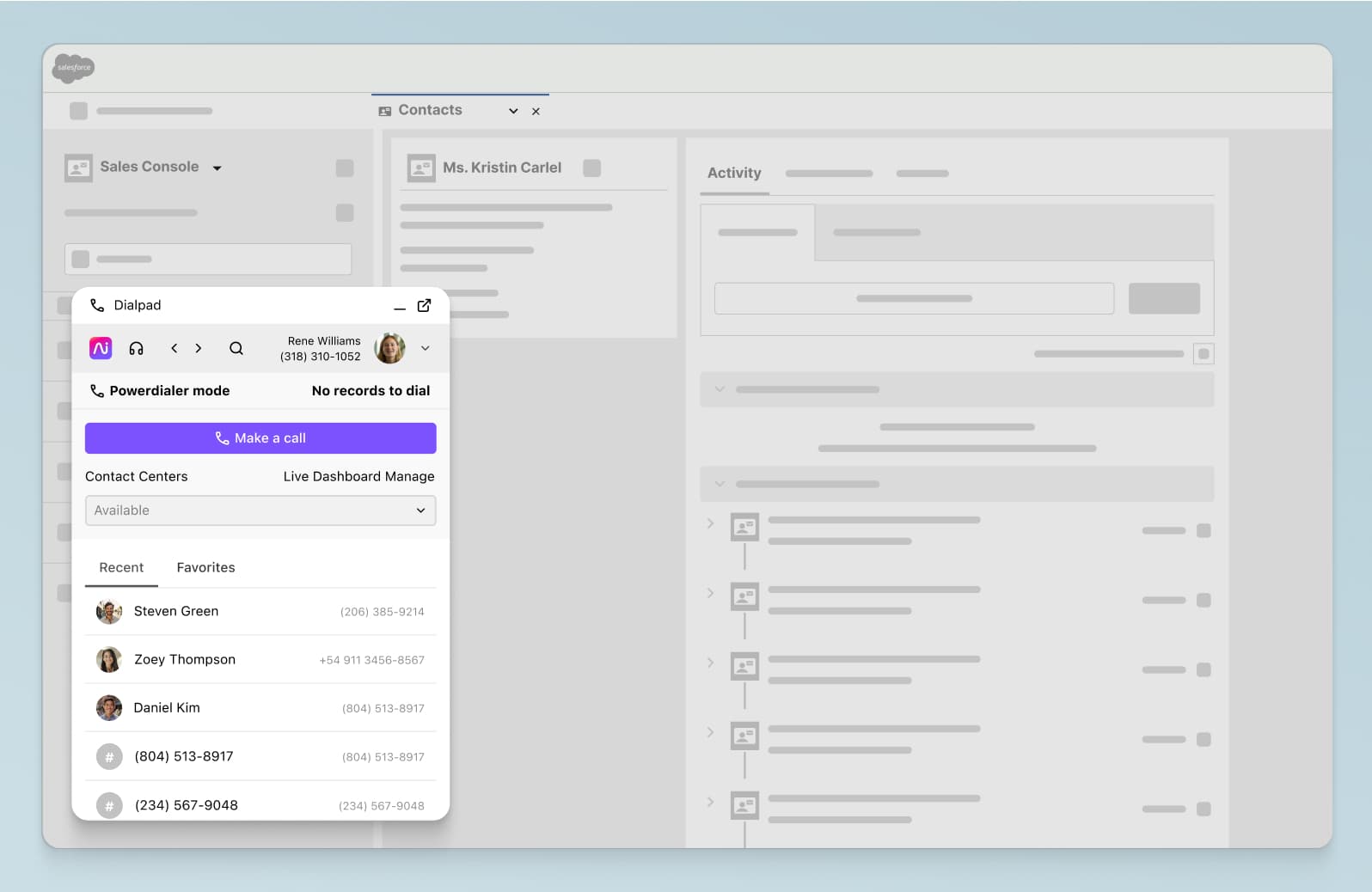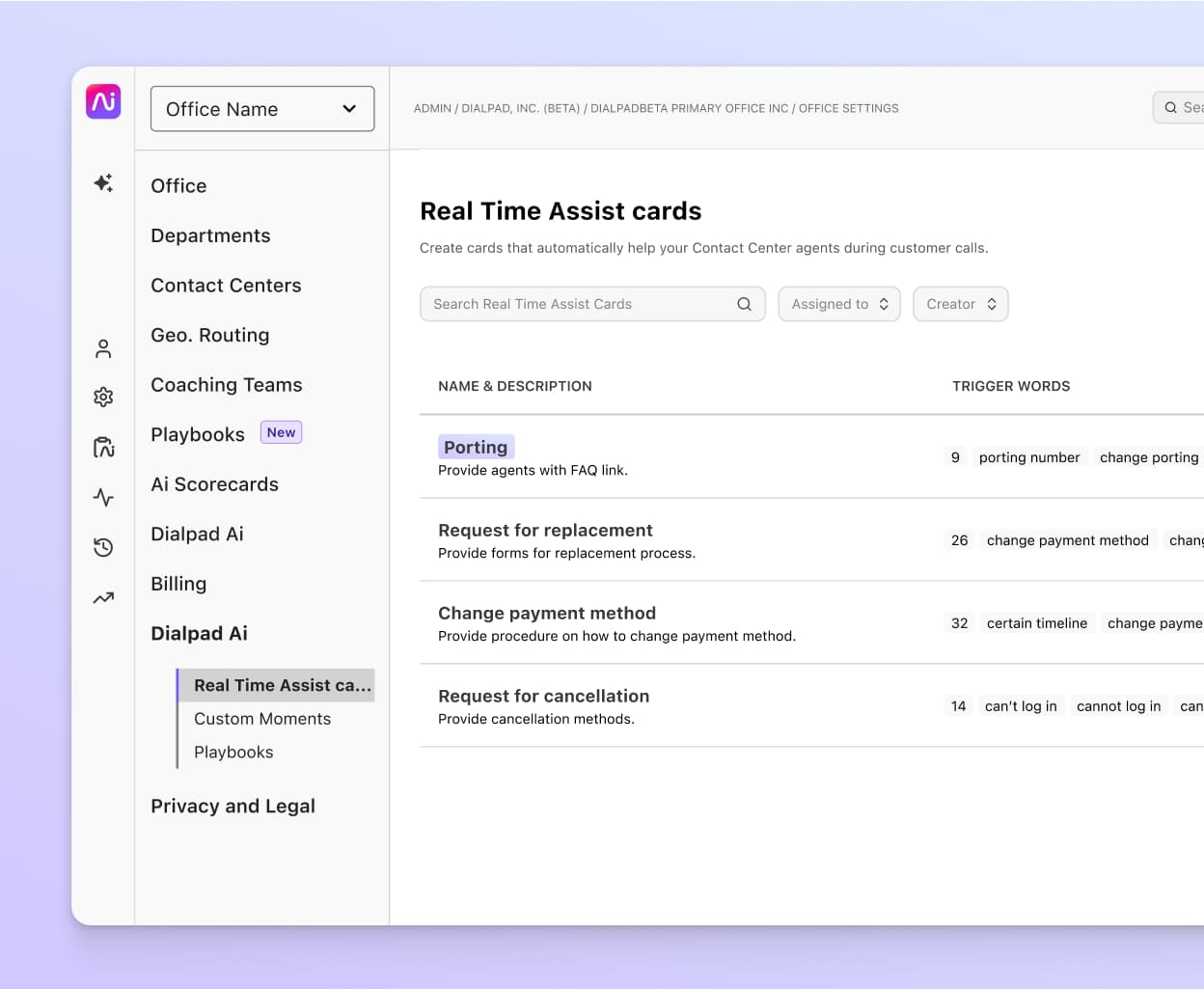Mastering the art of flawless follow-up calls

Sales Development Representative

Tags
Share
If you’re selling a more expensive or complex product or service, then it’s safe to assume that deals don’t typically close on the first call or message.
As SDRs here at Dialpad, we’re no strangers to cold calling leads and also having follow-up conversations to qualify those leads, learn more about their needs, and move the deal forward.
That’s why the art of follow-up calls is one of the most important skills a sales rep can learn, whether you’re at a small business or large enterprise.
From figuring out how many times to contact a prospect to what time of day they’ll be most receptive, the sooner a rep can learn these tips and tricks, the more successful they’ll be. In this guide, I’ll focus specifically on follow-up calls (as opposed to emails and other channels like LinkedIn messages) since they’re still one of the biggest deal drivers in most industries, and share some of the things I’ve learned that have made my own follow-up calls with prospects more successful.
The importance of the follow-up call
Follow-up calls are hugely important to a sales process. If a deal doesn’t close on first contact, you’re fully relying on that follow-up to get another shot to convince a potential customer that your business is the right choice for them.
If you don’t follow up in time—or worse, if you don’t follow up at all—you’re letting free money slip through your fingers.
Some salespeople might be reluctant to follow up on a call because they don’t want to be perceived as pushy, but follow-ups aren’t about hard selling anyone. After all, the initial contact may have been cut short because the prospect was busy, or maybe you just left a voicemail that you’re following up on this time around.
👉 Dialpad tip:
The first follow-up is the most important one because prospect engagement progressively gets worse after your initial contact. Don’t waste your first follow-up!
How to know if a follow-up call is the right call
Here’s the thing. Sometimes, a follow-up sales call isn’t the best way to check in with a prospect. I use email templates, LinkedIn messages, and other channels too when I follow up depending on the situation—you have to know when it’s the right channel for you.
There are lots of integrations and automations that can help outbound sales teams too, and I’ve found these to be really helpful because they reduce a lot of the repetitive manual work that can be a big time-suck for reps.
For example, Outreach is a good sales engagement tool that lets you design an outreach sequence that includes phone calls and email templates. Your sales manager can set how frequently follow-ups should happen (e.g. "Day 1 is a phone call, Day 4 is a follow-up email, Day 7 is a second follow-up call, etc.)
Reps can customise subject lines and even email text if they want a more personal touch, and Outreach also integrates with Dialpad, which is helpful because it lets you make outbound calls from directly inside Outreach—less toggling back and forth is always a plus:

Consider these factors when deciding on a follow-up channel:
1. Your prospect’s age: Millennials might be more likely to respond to an email, text message, or even social media message follow-up (like LinkedIn) than a phone call.
2. The nature of your relationship: How many times have you spoken with the prospect? What channels have they responded to the fastest in the past? How casual is the conversation? Asking yourself these questions first can help you gauge which channel will make the biggest impact.
3. How can you surprise and delight your prospect? Email and phone calls are the default, but might there be a direct mail opportunity (if it’s a special prospect)?
Bottom line: Sometimes, the perfect follow-up call isn’t a call at all! The perfect follow-up is whatever gets you a response. (And sometimes, that’s a text message.)
4 effective follow-up strategies
1. Send an email follow-up quickly after a phone call
Especially if you didn’t manage to reach that person on the call and hit their voicemail instead.
This is an important step in your follow-up strategy because an email allows salespeople to provide more information and expand on the value of your product or service, and even share resources that the prospect might find useful.
And for those situations where you’re sending a follow-up email after having had an actual phone call with a prospect, the email serves as a recap of what you discussed, which the prospect can review on their own.
A sales conversation that went well is great, and you want it to stay top of mind for your prospect. (Just make sure you send the email soon after the call instead of waiting until next week!)
2. Schedule follow-up reminders
Some cold calling tools have a scheduling feature built in, while others integrate with calendar apps like Google Calendar and Outlook to let you schedule reminders right in your calendar.
Scheduling this into your day is essential because most salespeople have a ton going on and things just pop up during the course of the day. If you don’t have your follow-up reminders in your calendar, it’s almost impossible to remember to do them.
Speaking of integrations, make sure you log your follow-up calls and other touches in your CRM (Customer Relationship Management) platform. One thing that’s great about Dialpad, which our sales team uses as our communications platform, is that it integrates with a wide range of CRMs like Salesforce, HubSpot, and Zoho CRM.
The integration not only embeds a dialler right inside those CRMs so that salespeople can make calls from there without having to switch tabs, it also automatically logs activities like sales calls and texts to the CRM:

(Dialpad’s Salesforce integration also has a power dialler that’s great for high-velocity outbound sales teams because it eliminates the need to manually dial every phone number.)
3. Have a loose script for your phone call follow-up
Emphasis on “loose.” I find that having those talking points ready is helpful because you have more peace of mind knowing that even if you lose your train of thought or if your sales call goes in an unexpected direction, you have an anchor that you can bring it back to.
The important thing is that you’re able to adapt and pivot during your follow-up call, and that you’re not just rigidly following the script. Prospects might ask you niche questions or bring up surprising objections, and the best way to be prepared is to do your homework and understand your product or service in and out.
Of course, there are some shortcuts and tools that can help with this to a certain degree. For example, Dialpad has some unique sales AI functionality that helps our calls go more smoothly. Say our sales managers notice that prospects have been asking a lot about pricing. They can create a Real-Time Assist (RTA) card in Dialpad with helpful notes on our pricing and packages, and set that RTA card to pop up automatically on reps’ screens whenever “price” or “cost” is spoken on a call:

This is great because managers don’t have to personally coach every single call, but we can still easily get the information we need to handle different objections that come up on follow-up calls.
4. Don’t reach out just to “check in”
Every sales call where you can connect with a prospect is valuable—don’t waste it on a “check-in” or “touch base.” Be strategic and ask good follow-up questions that will drive your deal forward, whether that’s a signature or a booked demo.
Always provide value when re-connecting. Share a new feature that just came out, or a case study from another customer who's solving a problem that’s relevant to this prospect. You don’t want to overwhelm your prospect with too much information, but sending the right tidbit could be exactly what’s needed to spark interest in a conversation that’s otherwise gone cold.
Equip your reps to have better follow-up calls
Even the smartest sales reps can benefit from having the right tools and automations to speed up their follow-ups.
Think of it as the difference between 50 at-bats a day and 80 at-bats a day. How many more booked meetings and demos could you get from those 30 extra opportunities?
Whether you’re in real estate or insurance, good follow-ups are crucial to your success as a salesperson. If you think your team could use a good communications platform that lets you make phone calls, send SMS/MMS + instant messages, and have video calls with prospects and teammates—all in one platform—get a demo of Dialpad to see how our own sales team is using it!
See how Dialpad helps our reps have more effective follow-ups
Get a walkthrough of Dialpad's sales communications platform, with its built-in AI assists, power dialler functionality, and more. Or, take a self-guided interactive tour of the app on your own!








